Related Research Articles

Midlothian is a historic county, registration county, lieutenancy area and one of 32 council areas of Scotland used for local government. Midlothian lies in the east-central Lowlands, bordering the City of Edinburgh council area, East Lothian and the Scottish Borders.

The Royal Society of Edinburgh (RSE) is Scotland's national academy of science and letters. It is a registered charity that operates on a wholly independent and non-partisan basis and provides public benefit throughout Scotland. It was established in 1783. As of 2021, there are around 1,800 Fellows.
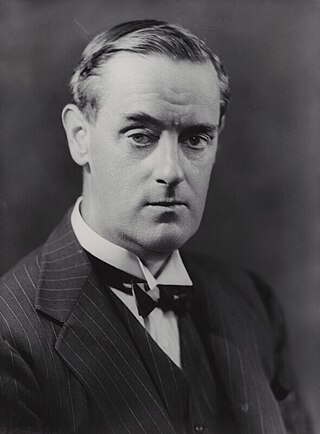
Victor Alexander John Hope, 2nd Marquess of Linlithgow, was a British Unionist politician, agriculturalist, and colonial administrator. He served as Governor-General and Viceroy of India from 1936 to 1943. He was usually referred to simply as Linlithgow.
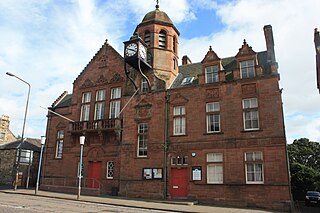
Penicuik is a town and former burgh in Midlothian, Scotland, lying on the west bank of the River North Esk. It lies on the A701 midway between Edinburgh and Peebles, east of the Pentland Hills.
Elgin Burghs was a district of burghs constituency of the House of Commons of Great Britain from 1708 to 1801 and of the House of Commons of the United Kingdom from 1801 to 1918. Until 1832, when Peterhead was added, the constituency comprised the parliamentary burghs of Elgin, Cullen, Banff, Inverurie and Kintore, lying in Elginshire, Banffshire and Aberdeenshire.

Dollar Academy, founded in 1818 by John McNabb, is a private co-educational day and boarding school in Scotland. The open campus occupies a 70-acre (28 ha) site in the centre of Dollar, Clackmannanshire, at the foot of the Ochil Hills.
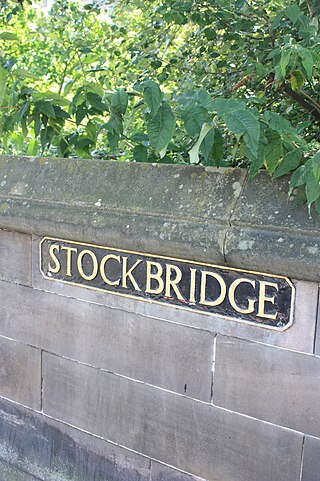
Stockbridge is a suburb of Edinburgh, located north of the city centre, bounded by the New Town and by Comely Bank. The name is Scots stock brig from Anglic stocc brycg, meaning a timber bridge. Originally a small outlying village, it was incorporated into the City of Edinburgh in the 19th century. The current "Stock Bridge", built in 1801, is a stone structure spanning the Water of Leith. The painter Henry Raeburn (1756–1823) owned two adjoining estates, Deanhaugh and St Bernard's, which he developed with the assistance of the architect James Milne. Milne was also responsible for the fine St Bernard's Church (1823) in Saxe Coburg Street. Ann Street, designed by Raeburn and named after his wife, is a rare early example of a New Town street with private front gardens.

Colinton is a suburb of Edinburgh, Scotland situated 3+1⁄2 miles (5.6 km) south-west of the city centre. Up until the late 18th century it appears on maps as Collington. It is bordered by Dreghorn to the south and Craiglockhart to the north-east. To the north-west it extends to Lanark Road and to the south-west to the City Bypass. Bonaly is a subsection of the area on its southern side.
Riccarton is a village and parish in East Ayrshire, Scotland. It lies across the River Irvine from Kilmarnock, this river forming the boundary between Riccarton and Kilmarnock parishes, and also between the historical districts of Kyle and Cunningham. The name is a corruption of 'Richard's town', traditionally said to refer to Richard Wallace, the uncle of Sir William Wallace. The parish also contains the village of Hurlford.
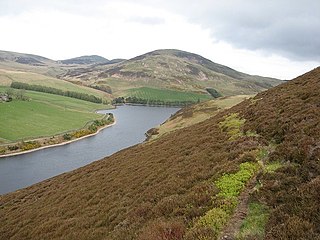
Glencorse Reservoir is a reservoir in Midlothian, Scotland, two miles west of Glencorse, in the Pentland Hills.
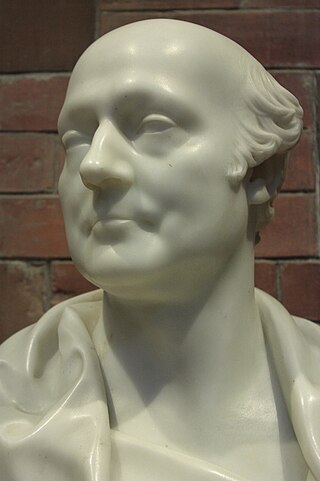
James Jardine was a Scottish civil engineer, mathematician and geologist. He was the first person to determine mean sea level. He built tunnels and bridges, including for the Innocent Railway, and built reservoirs including Glencorse, Threipmuir, Harlaw for Edinburgh Water Company, and Cobbinshaw for the Union Canal.
The Edinburgh, Loanhead and Roslin Railway was a railway line south of Edinburgh, Scotland, built primarily to serve mineral workings, although passenger trains were operated. It is also known as the Glencorse Branch of the North British Railway. It opened from a junction at Millerhill on the Waverley Route, to Roslin in 1874 and was extended to a location near Penicuik to serve Glencorse Barracks and a colliery in 1877 and to Penicuik Gas Works in 1878.
Events from the year 1886 in Scotland.
Events from the year 1875 in Scotland.
Events from the year 1855 in Scotland.
Events from the year 1854 in Scotland.

New Calton Burial Ground is a burial ground in Edinburgh. It was built as an overspill and functional replacement to Old Calton Burial Ground and lies half a mile to its east on Regent Road in Edinburgh, Scotland, on the south-east slopes of Calton Hill. On its southern edge it attaches to the north-east edge of the Canongate in the Old Town. It lies on a fairly steep south-facing slope with views to Holyrood Palace, the Scottish Parliament Building and Arthur’s Seat.
Glencorse is a parish of Midlothian, Scotland, lying 7 miles south of Edinburgh. It is bounded on the north-west by the former parish of Colinton now within the City of Edinburgh, to the north and west by Lasswade and to the south and west by Penicuik.

Harold Ogle Tarbolton FRIBA (1869–1947) was a 19th/20th century British architect, mainly working in Scotland. He was affectionately known as Tarrybreeks. In later life he went into partnership with Sir Matthew Ochterlony to create Tarbolton & Ochterlony.
John Wilson FRSE FGS FCS LLD (1812–1888) was a 19th-century British agriculturalist.
References
- ↑ John Marius Wilson; John Wilson (1 January 1882). The Gazetteer of Scotland. Willow Bend Books. pp. 329–. ISBN 978-1-888265-07-1.
- ↑ Scotland (1857). Directory to noblemen and gentlemen's seats, villages, etc., in Scotland ... To which are added tables, shewing the despatch and arrival of the mails ... throughout Scotland and transmission of letters. Compiled by A. G. Findlay; corrected and edited by G. Thomson. pp. 108–.
- ↑ David M. Munro (2006). Scotland: An Encyclopedia of Places & Landscapes. Collins. p. 336. ISBN 978-0-00-472466-9.
- ↑ "Lord Gorton to Tour Camps". Hartlepool Mail - Saturday 15 July 1939, page 5. (via British Newspaper Archives. Subscription required)
- ↑ John Christopher Malcolm Baynes; John Laffin (December 1988). Soldiers of Scotland. Brassey's Defense Publishers. p. 62.
- ↑ "Edinburgh Agricultural Students". Edinburgh Evening News - Tuesday 09 September 1924 page2. (via British Newspaper Archives. Subscription required)
- ↑ "Edinburgh University Buys Estates". Aberdeen Journal - Thursday 13 February 1947. page 4. via British Newspaper Archives. Subscription required)